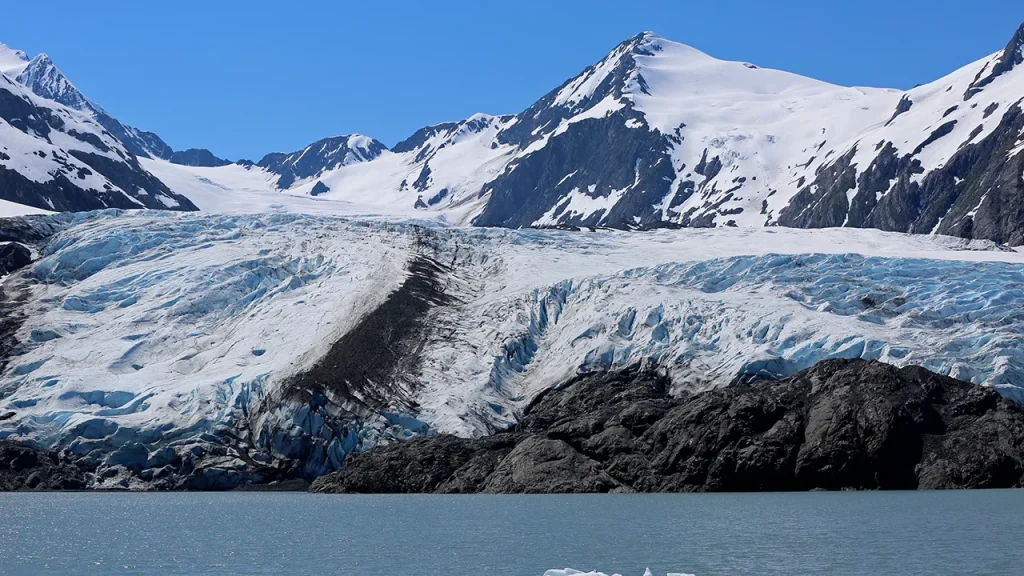A tragic avalanche incident occurred in the Chugach Mountains of Alaska, claiming the lives of three skiers. The men were part of a group helicoptered to a remote backcountry area near Girdwood, a ski community located approximately 40 miles south of Anchorage. Local authorities have expressed skepticism about the possibility of recovering survivors due to the challenging conditions at the scene.
| Article Subheadings |
|---|
| 1) Details of the Avalanche Incident |
| 2) Emergency Response Efforts |
| 3) Conditions of the Site |
| 4) Impact on Skiing Community |
| 5) Overall Avalanche Statistics and Safety |
Details of the Avalanche Incident
The avalanche occurred while a group of adult skiers was helicoptered into the Chugach Mountains for a backcountry skiing experience. On Tuesday, the Alaska State Troopers reported that three male skiers from out of state were likely caught and buried under the snow when the avalanche swept through. The ski guides, who were accompanying the skiers, acted quickly to locate the missing individuals using avalanche beacons.
It was confirmed that the avalanche engulfed the three skiers under a significant amount of snow, with estimates suggesting they were buried under depths ranging from 40 to 100 feet. This predicament has led authorities to express doubts about the chances of survival. The skiers had taken precautions prior to the avalanche by deploying their avalanche airbags, designed to keep them from sinking deeply into the snow.
Emergency Response Efforts
In the immediate aftermath of the avalanche, rescue operations were promptly organized by the ski guides from Chugach Powder Guides. They activated a rescue alert, initiating efforts to locate and retrieve the missing skiers. However, the rescue mission faced significant delays due to perilous conditions, including a high avalanche risk and limited daylight. These factors compounded the difficulty and urgency of the operation.
Despite the ski guides’ best efforts, authorities, including spokesperson Austin McDaniel from the Alaska State Troopers, indicated that the likelihood of recovering the skiers had diminished substantially. They could not assess the site thoroughly, further complicating the rescue attempts. As daylight faded and risk levels remained elevated, the decision was made to cease recovery efforts until conditions stabilized.
Conditions of the Site
The Chugach Mountains, where the avalanche took place, are known for their stunning but treacherous skiing conditions. As a popular destination for ski enthusiasts, the area can often face unpredictable weather patterns and heavy snowfall, adding to the inherent risks associated with backcountry skiing. Just prior to the avalanche incident, conditions were reportedly conducive to snow accumulation, leading to increased avalanche risks.
Environmental factors such as recent snowfall, gusty winds, and warming temperatures contributed to the instability of the snowpack in the region. Authorities issued warnings regarding the considerable avalanche risk ahead of the incident, hoping to alert skiers of the dangers involved. These notifications included advisories on the necessary safety precautions skiers should take when venturing into such challenging terrains.
Impact on Skiing Community
The avalanche incident has cast a shadow over Girdwood, a well-known winter tourism hub, particularly among skiing enthusiasts. The ski community, deeply intertwined with the natural allure of the Chugach Mountains, is left grappling with the tragic loss of life. This heartbreaking event serves as a reminder of the hazards that can arise in backcountry skiing, even for those with experience.
Spokespersons for Chugach Powder Guides reflected on the situation, expressing condolences for the families affected by this tragedy. The guides had witnessed the men’s skilled efforts to ensure their safety amidst the dangerous conditions before the avalanche struck. Leaders within the ski community are urging fellow skiers to remain vigilant regarding safety measures as they navigate the slopes during this snowy season.
Overall Avalanche Statistics and Safety
Avalanches remain a pervasive threat during winter months, particularly in mountainous regions prone to heavy snow. Currently, this winter season has seen at least 15 avalanche-related fatalities across the United States, highlighting an escalating concern for outdoor adventurers. Previous incidents, including a recent case in Washington state, demonstrate the real dangers posed by avalanches while snowmobiling and skiing.
Ski safety organizations emphasize the importance of awareness and education about avalanche risks. Many advocate for the use of equipment such as avalanche beacons, airbags, and thorough training in avalanche safety protocols. The potential for serious injury or fatality continues to remind winter sports lovers of the need to exercise caution and heed warnings when engaging in high-risk activities outdoors.
| No. | Key Points |
|---|---|
| 1 | Three skiers were caught in a deadly avalanche in the Chugach Mountains, Alaska. |
| 2 | Emergency rescue operations faced significant challenges due to unsafe conditions. |
| 3 | The region had issued avalanche warnings prior to the incident. |
| 4 | The skiing community in Girdwood is mourning the loss of life and advocating for awareness. |
| 5 | Avalanches have claimed multiple lives across the U.S. this winter, underscoring safety concerns. |
Summary
The tragic avalanche incident in Alaska has once again drawn attention to the inherent risks associated with backcountry skiing. As the community mourns the lives lost, this event underscores the critical importance of safety education and precautions for winter sports enthusiasts. In a season marked by extreme conditions and avalanche incidents, awareness of risks has become paramount in preventing further tragedies.
Frequently Asked Questions
Question: What triggers an avalanche?
Avalanches are typically triggered by factors such as heavy snowfall, rapidly warming temperatures, or human activity that destabilizes the snowpack.
Question: How can individuals prepare for backcountry skiing?
Preparation for backcountry skiing includes obtaining proper equipment, undergoing avalanche safety training, and staying updated on local avalanche forecasts.
Question: What safety gear is recommended for skiing in avalanche-prone areas?
Skiers in avalanche-prone areas are recommended to carry avalanche beacons, shovels, probes, and airbags to increase their chances of survival if caught in an avalanche.
